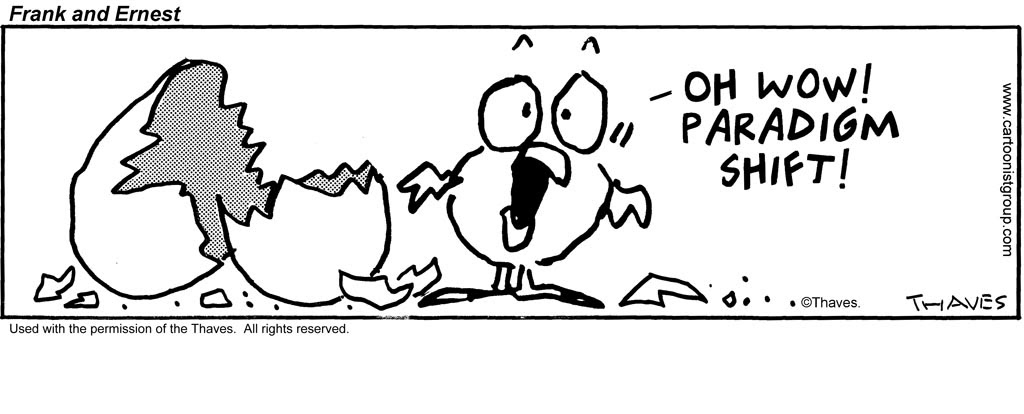This just in from U.S. News: Acceptance of Polygamy Is at a Record High, and TV Might Explain Why.
The article credits the popularity of the reality television series “Sister Wives” with changing public mores about polygamy. Google describes the series: “The rarely seen world of a polygamist family is documented in ‘Sister Wives,’ which follows Kody Brown, his four wives and their combined 17 children trying to live as a ‘normal’ family in a society that shuns their lifestyle.”
U.S. News reports that Gallup “has seen U.S. support for polygamy rise by almost 10 percentage points over the time ‘Sister Wives’ has been on the air.”

Gallup polling on American values and beliefs in May found acceptance of a person having multiple spouses at one time has grown in the U.S., with 17 percent of people saying the practice is “morally acceptable.” That number marked the highest rate on record dating back to 2003, according to Gallup data.
Of course, Gallup adds the disclaimer, “it is impossible to establish any direct causality between the show and changing attitudes.” But the story reminds me of Andrée Seu Peterson’s 6/14/2014 column in WORLD, “Repeated Exposure,” 700 words without rival for effectively unpacking the role of media in changing American attitudes toward sexual morality.
The little old lady next door who is starting to “come around” to accepting homosexuals as ordinary decent citizens did not shed her youthful revulsion toward sodomy through Socratic introspection. She just got used to the idea by a barrage of television, radio, magazine, and billboard ads—and plays.
There seems little reason to doubt that “Sister Wives” played a big part in the increased support for polygamy in the U.S.
In fact, this blog often makes the argument that the arts and media uniquely drive the culture. In “The Call of the Balladeers” Darrow pleads for Christian artists who will use their gifts to help turn the the culture away from the tide of cultural Marxism—to name one insidious, increasingly prevalent framework—and toward the Judeo-Christian worldview that celebrates the kingdom of God.
We are witnessing the slow death of Western civilization and indeed whole nations in Europe and North America. Cultural Marxists and their moral and cultural relativist followers celebrate this deconstruction of Western culture and society. Others mourn the loss of the order that made the glory of Western civilization and the lands of freedom and opportunity, the order that created great nations and, in the case of the United States, a great nation of immigrants.
Those who mourn should take courage: we can act to turn the tide and bring revival and reformation. Among other assets, we need a new generation of balladeers. We need minstrels, traveling singers and artists who move from place to place telling stories, reciting ballads, singing of heroic actions and peoples.
Culture is upstream from economics, politics and society. Who shapes culture more than anyone else? It is the artists, those who consciously create or critique culture with their art.
How sorely we need art that affirms the truth, beauty and goodness summarized in the person of Jesus Christ.
 Francis Schaeffer was one pioneer who talked about the role of art as a Christian calling.
Francis Schaeffer was one pioneer who talked about the role of art as a Christian calling.
What is the place of art in the Christian life? Is art—especially the fine arts—simply a way to bring worldliness in through the back door? What about sculpture or drama, music or painting? Do these have any place in the Christian life? Shouldn’t a Christian focus his gaze steadily on “religious things” alone and forget about art and culture?
As evangelical Christians, we have tended to relegate art to the very fringe of life. The rest of human life we feel is more important.
Despite our constant talk about the lordship of Christ, we have narrowed its scope to a very small area of reality. We have misunderstood the concept of the lordship of Christ over the whole man and the whole of the universe and have not taken to us the riches that the Bible gives us for ourselves, for our lives, and for our culture.
The lordship of Christ over the whole of life means that there are no platonic areas in Christianity, no dichotomy or hierarchy between the body and the soul. God made the body as well as the soul, and redemption is for the whole man.
As happens with many thinkers who are ahead of their time, here we are a couple of generations later trying to figure out how to apply Schaeffer’s reflections. One idea, neither new nor original, would be to actively encourage young Christian artists to pursue that career as a calling, a vocation thoroughly informed by a biblical worldview. What might result if we celebrated that calling with the same energy we give to encouraging those interested in pastoral ministry or missionary service?
That hasn’t been the typical practice in evangelical circles. The arts aren’t in our “sacred” space. Partly as a result, art schools are infamous for their godlessness. So what Christian parent wants his child studying at one of them? (H’mm, there’s another vacuum needing to be filled with biblically equipped Christ followers, some modern-day Dwight L. Moodys to found schools to train Christian artists.)
Here’s one potential result: fewer television series promoting polygamy, and more that elevate biblical marriage.
Wouldn’t that be something!
- Gary Brumbelow







2 Comments
Heather
February 26, 2018 - 12:41 pmAnother great article – bringing awareness, calling balladeers to influence culture, etc.
Just wanted to highlight something I’ve noticed and may be a great positive article – there are a growing number of TV shows that are addressing the viability of life in the womb, specifically using “baby” language and/or even creating the story line around the sterile language of a fetus being insufficient in reality. Saw a show on Good Doctor (new series) that operated on a baby that was in the womb based on the mother’s commitment to save her baby even at the risk of her own life. The camera showed them take the baby out of the womb and put it on the mother’s belly still attached and the doctor staring in amazement at the baby. It was powerful and undeniable the miracle of the life of a baby in the womb. Also this week on Chicago Med (another popular mainstream series) one of the patient’s was a pregnant drug addicted youth who went into premature labor. Very interesting story line as they removed the baby in the sac due to the mother’s distress and the baby was surprisingly alive so although it was so premature, it was likely to die (and eventually did) but the mother and ‘father’ touched, loved and grieved over the loss of their baby.
Anyway – I’ve been praying for the shift in our nation’s values for 2 decades and I do believe we are seeing God’s hand moving. I’ll forward another email with some other details not related to TV (balladeer messages).
So, for this I’m rejoicing and though we aren’t there yet, I see God!
Appreciate your prophetic voice!
Heather
admin
February 26, 2018 - 5:17 pmHeather, thanks for such a substantial comment, sister. Lots of food for thought there.
Gary Brumbelow